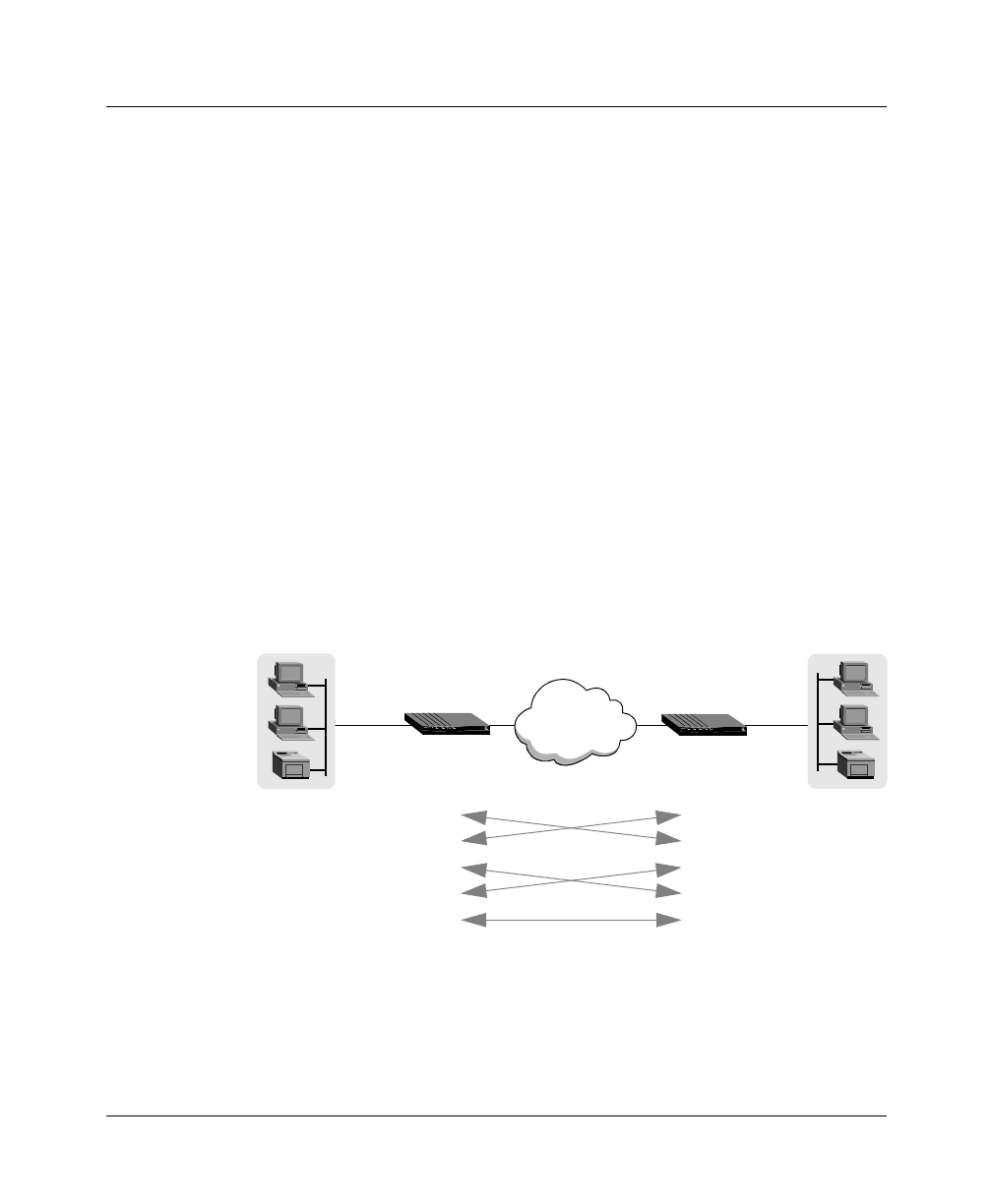User`s guide
Table Of Contents
- Ascend Customer Service
- How to use this guide
- What you should know
- Documentation conventions
- How to use the on-board software
- Manual set
- Configuring WAN Connections
- Configuring IP Routing
- Introduction to IP routing on the Pipeline
- Managing the routing table
- Parameters that affect the routing table
- Static and dynamic routes
- Configuring static routes
- Specifying default routes on a per-user basis
- Enabling the Pipeline to use dynamic routing
- Route preferences
- Viewing the routing table
- Fields in the routing table
- Removing down routes to a host
- Identifying Temporary routes in the routing table
- Configuring IP routing connections
- Ascend Tunnel Management Protocol (ATMP)
- IP Address Management
- Connecting to a local IP network
- BOOTP Relay
- DHCP services
- Dial-in user DNS server assignments
- Local DNS host address table
- Network Address Translation (NAT) for a LAN
- Configuring IPX Routing
- How the Pipeline performs IPX routing
- Adding the Pipeline to the local IPX network
- Working with the RIP and SAP tables
- Configuring IPX routing connections
- Configuring the Pipeline as a Bridge
- Defining Filters and Firewalls
- Setting Up Pipeline Security
- Pipeline System Administration
- Pipeline 75 Voice Features
- IDSL Implementations
- APP Server utility
- About the APP Server utility
- APP Server installation and setup
- Configuring the Pipeline to use the APP server
- Using App Server with Axent SecureNet
- Creating banner text for the password prompt
- Installing and using the UNIX APP Server
- Installing and using the APP Server utility for DO...
- Installing and using the APP Server utility for Wi...
- Installing APP Server on a Macintosh
- Troubleshooting
- Upgrading system software
- What you need to upgrade system software
- Displaying the software load name
- The upgrade procedure
- Untitled

Configuring the Pipeline as a Bridge
Introduction to Ascend bridging
Pipeline User’s Guide Preliminary January 30, 1998 5-3
Broadcast addresses and Dial Brdcast
A broadcast address is recognized by multiple nodes on a network. For example,
the Ethernet broadcast address at the physical level is:
FFFFFFFFFFFF
All devices on the same network receive all packets with that destination address.
As a router, the Pipeline discards broadcast packets. As a bridge, it forwards
packets with the broadcast destination address across all active sessions that have
bridging enabled, and initiates a session for all Connection profiles in which the
Dial Brdcast parameter is set to Yes.
Note:
ARP broadcast packets that contain an IP address in the bridge table are a
special case. For details, see “Static bridge-table entries” on page 5-8.
How bridged connections are established
Figure 5-1 show how station names and passwords sync a bridging connection.
Figure 5-1. Negotiating a bridge connection (PPP encapsulation)
The system name assigned to the Pipeline in the Name parameter of the System
Profile must be exactly the same device name specified in the Connection profile
on the remote bridge (the match is case sensitive). Similarly, the name assigned
WAN
Ethernet
Site B
Site A
Name=sitagw
Remote station=sitbgw
Bridging=yes
Send PW=*noknok*
Recv PW=*comein*
Name=sitbgw
Bridging=yes
Recv PW=*noknok*
Send PW=*comein*
Remote station=sitagw










